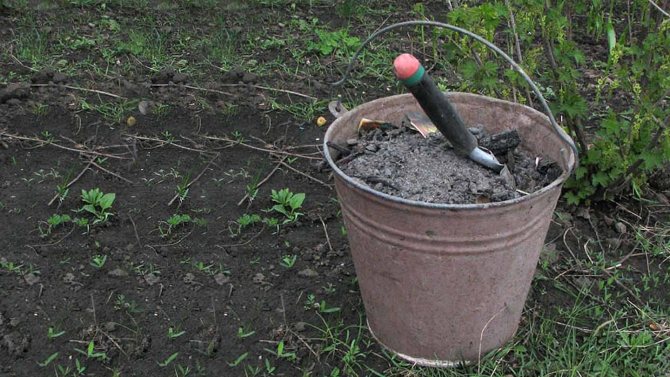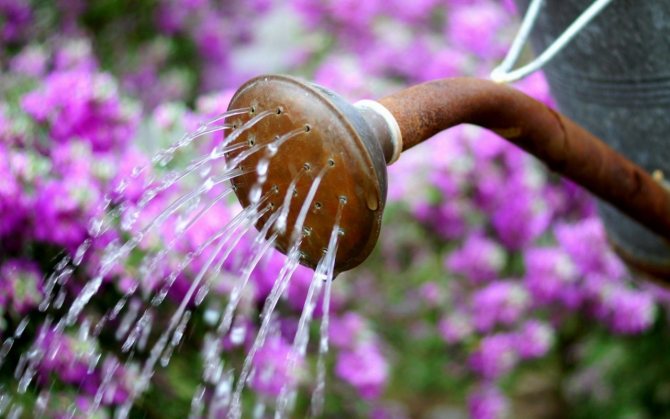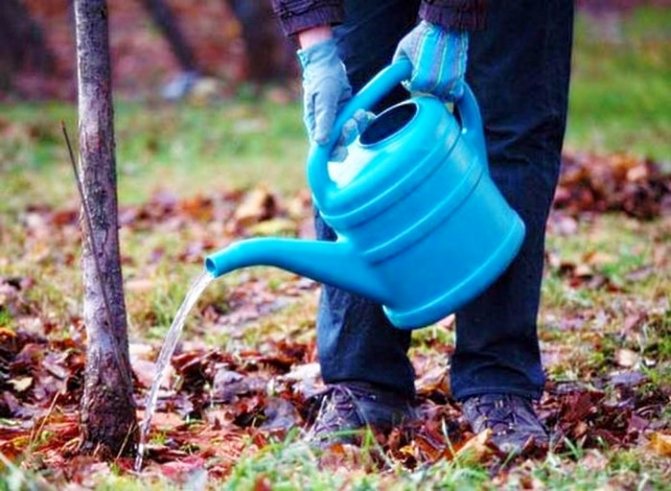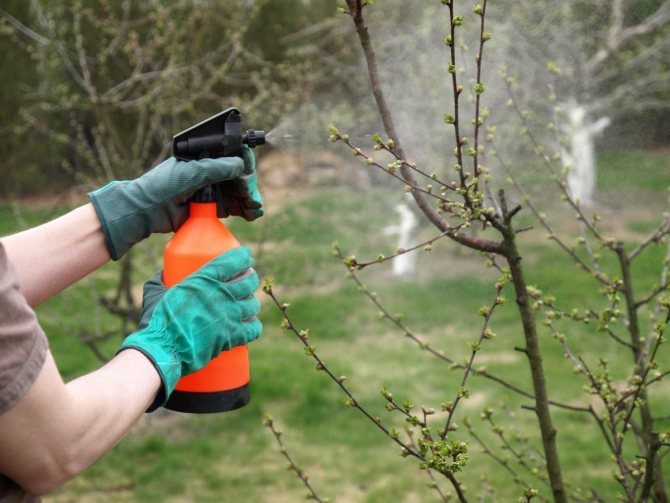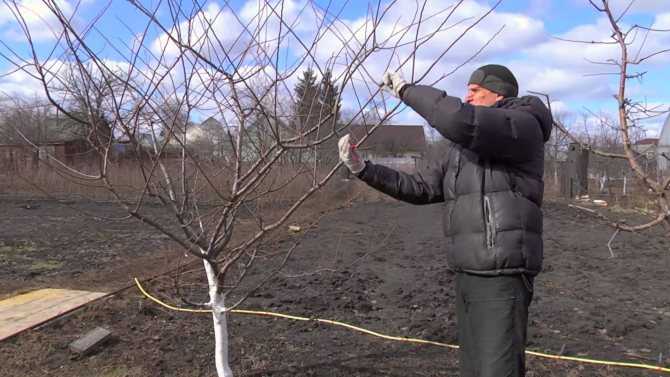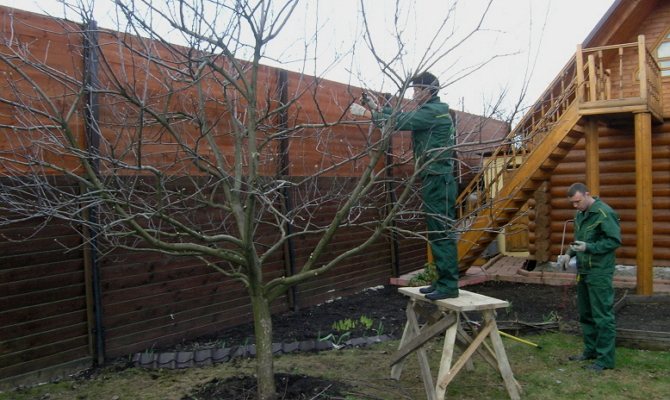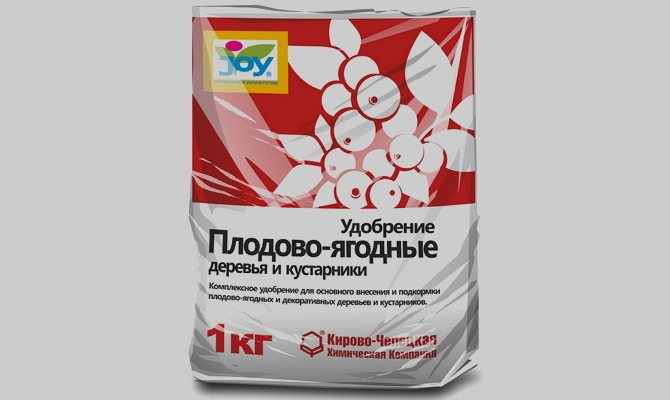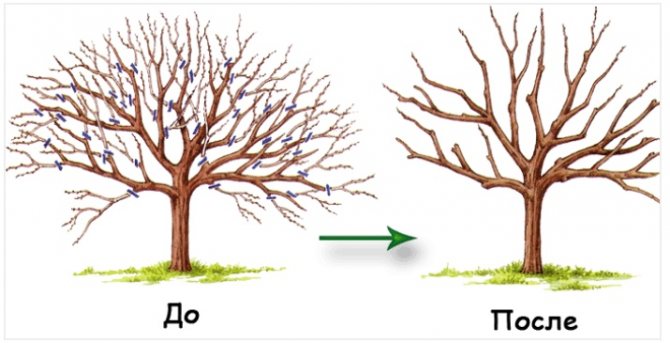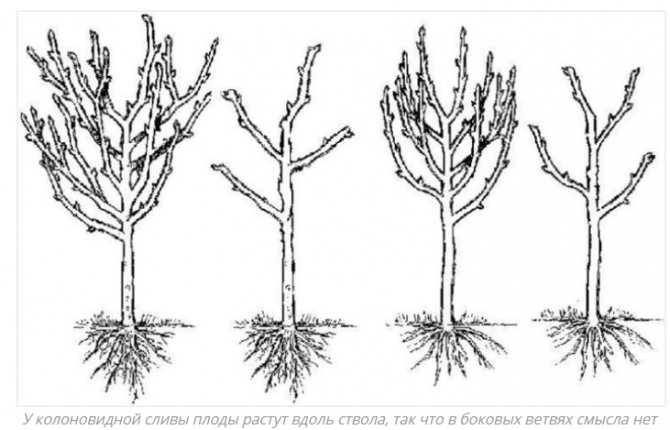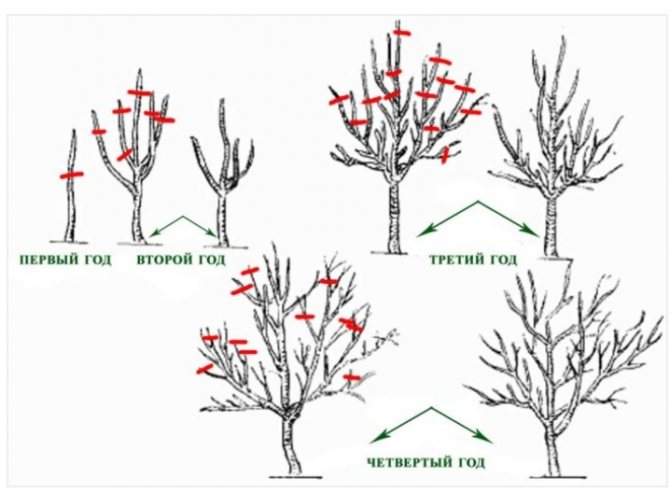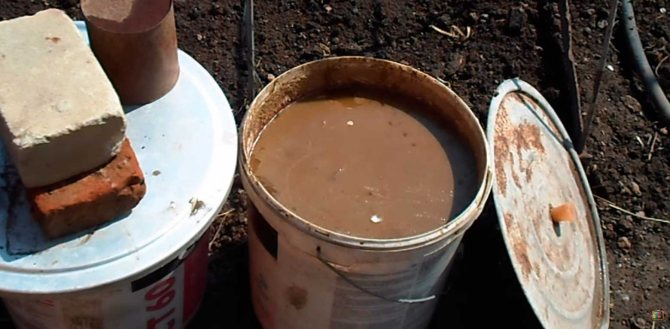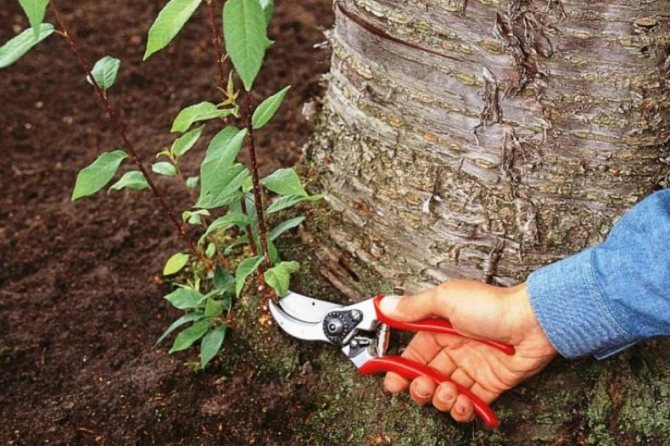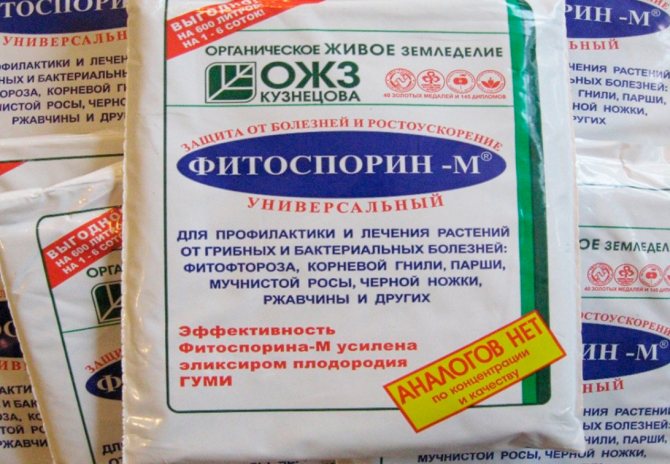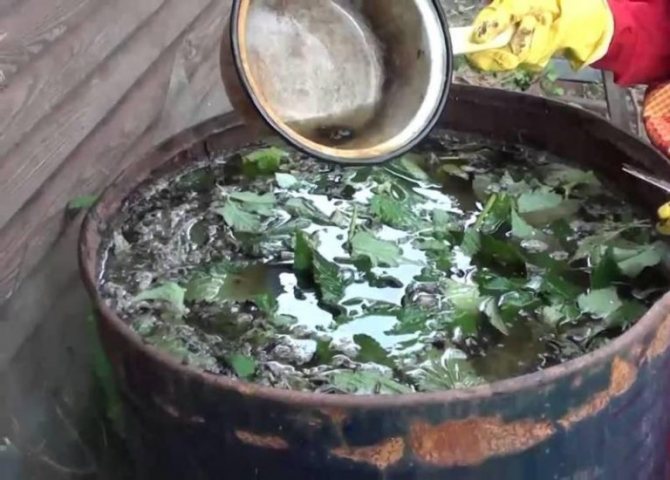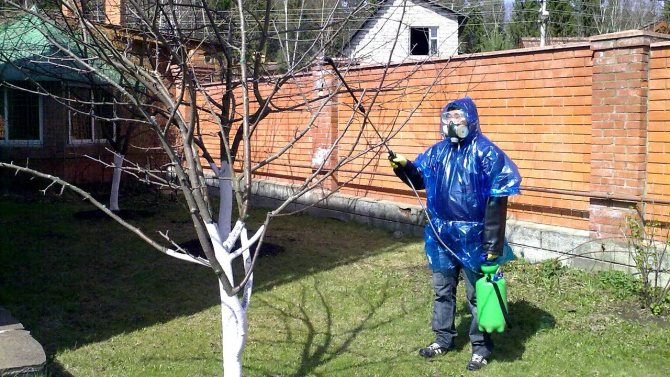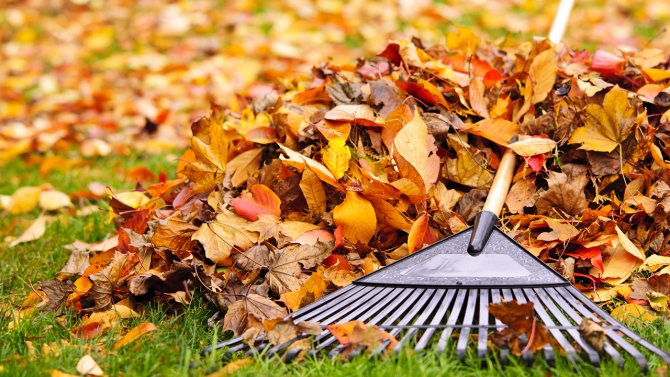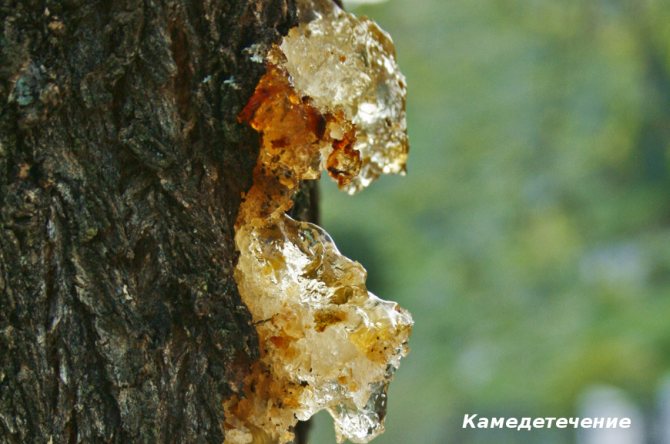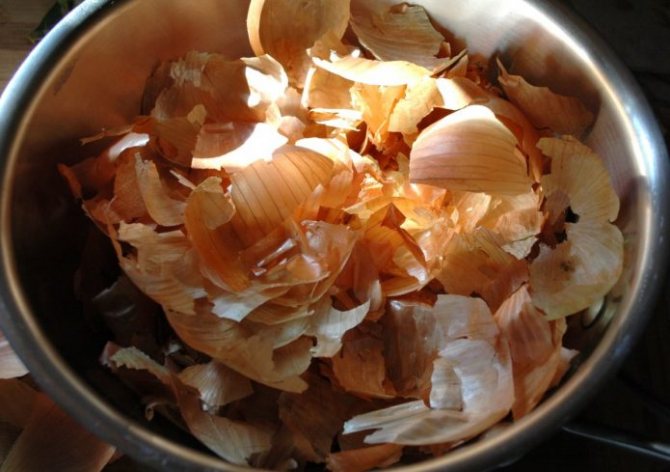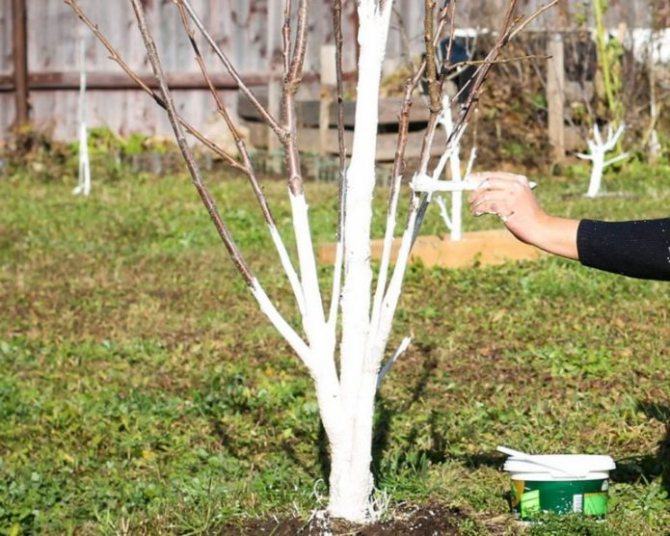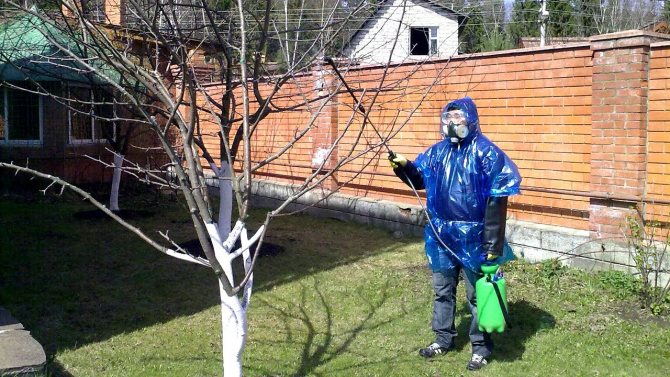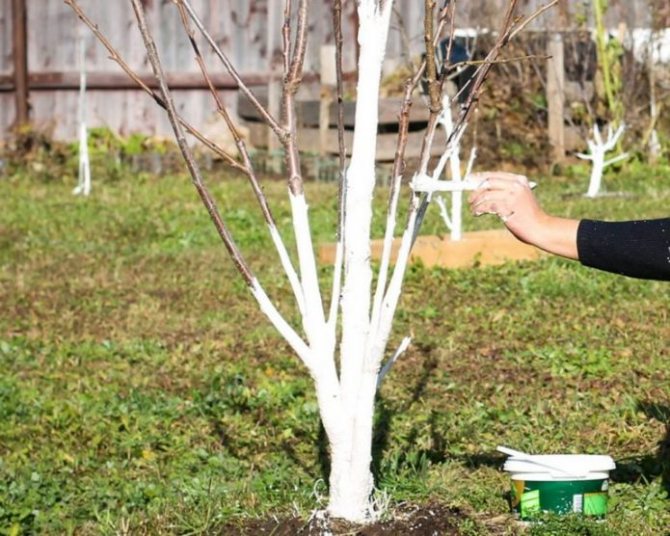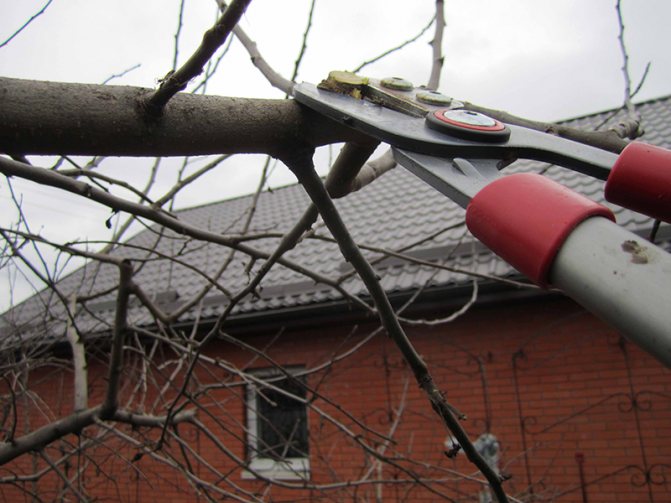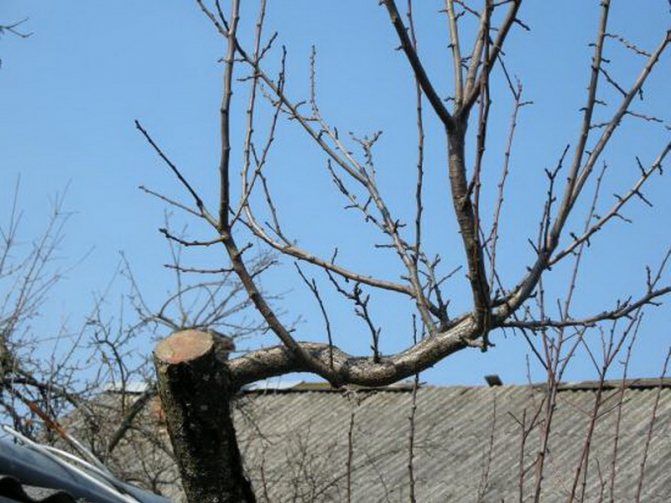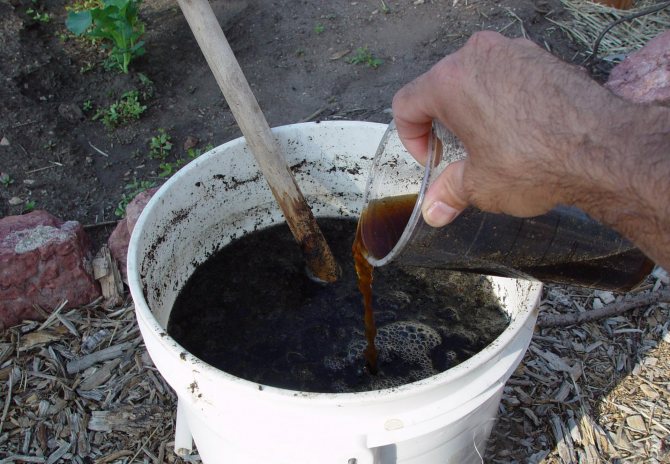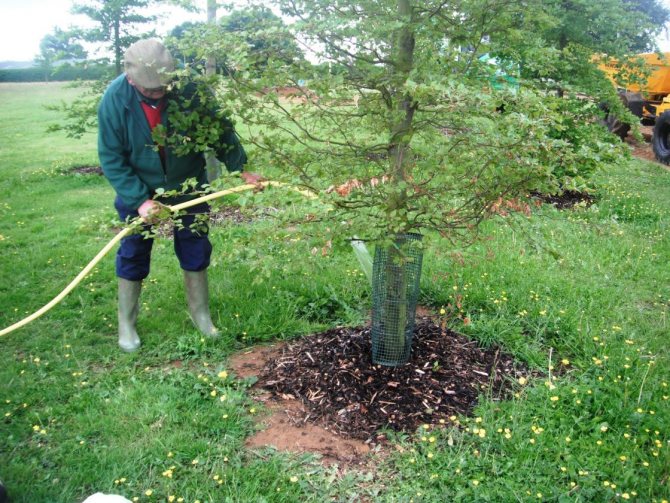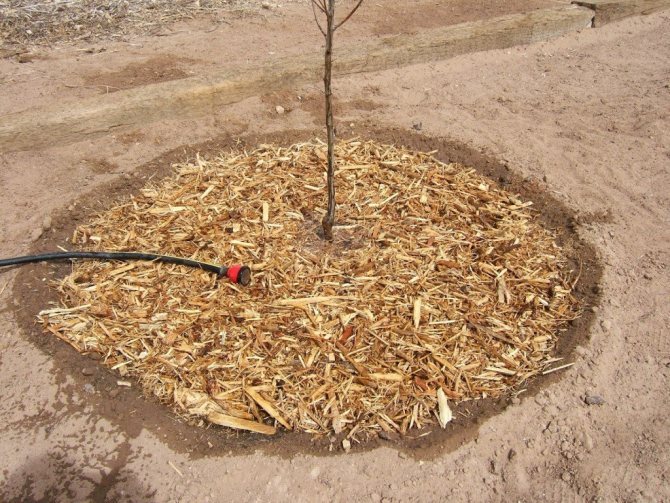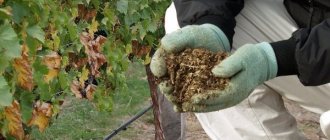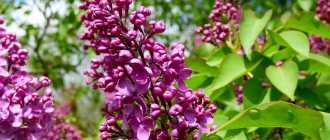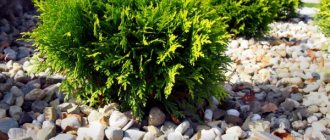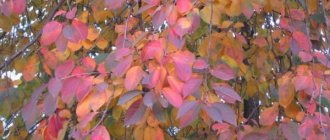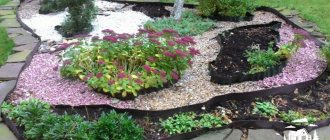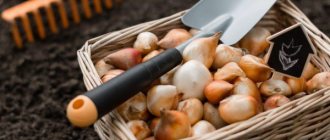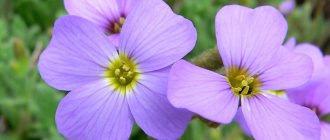Plum is a delicate and sensitive tree. However, you cannot do without pruning, otherwise many new branches will appear, the crown will thicken and the yield will decrease. Therefore, pruning plums in autumn and spring is a must for gardeners who want to get a healthy, fruitful tree.
Do I need to cut the plum
A novice gardener may decide that there is no need to prune a plum - it is a compact tree that does not tend to grow in breadth. But at the same time, its crown grows very quickly and the branches intertwine.
In the early years, this feature may seem like a plus. The plum, faster than other fruit trees, creates the volume necessary for fruiting, the first fruits will appear earlier, and the yield will grow rapidly.
But after 4–5 years, more and more empty space will appear inside the crown, and on the periphery the branches will thicken, become too long and thin, and most of the fruits and leaves will “settle” there. The harvest will be uneven, the fruits are crushed, and their quality will seriously deteriorate. New fruitful branches will cease to appear. In addition, the plum will become unstable to cold, can wither and die.
Correct pruning of plums will help the tree to be healthy, bear fruit for a long time, improve the quality of the crop and give it a well-groomed appearance.
When is the best time to prune - in spring or autumn
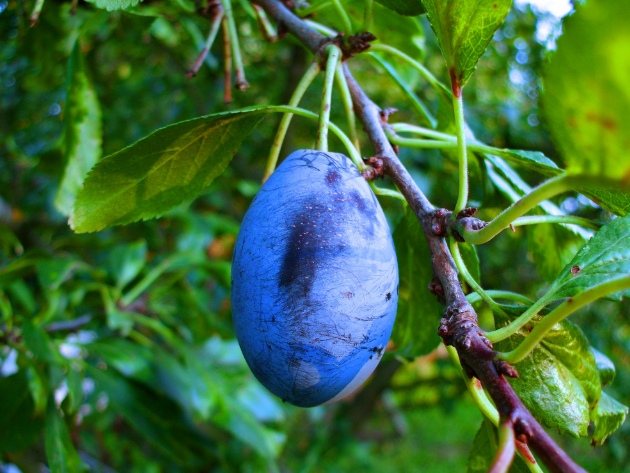
Autumn pruning of plums is more relevant for areas with warm, mild winters, in cooler regions it is better to transfer pruning to spring.
Traditionally, plum trees are pruned in the fall from September to October or in the spring in March-April, sometimes pruning is also practiced in the middle of summer so that the tree can withstand the harvest without broken branches. The choice of the timing of the procedure depends on:
- from the type of trim;
- climate of the region;
- the age of the tree.
The first pruning of a plum is done in the spring, it prepares the tree for the fruiting season and includes:
-delete affected and competing branches;
- formation of the skeleton and crown.
Spring pruning will be successful if the growing season has not yet begun, and the tree is no longer threatened by frost.
Pruning plums in the fall to prepare for winter is the second most important procedure after spring pruning. It can be started only when the tree has completely dropped the foliage - this is a sign of the end of the growing season. However, it is not worth delaying with pruning, early frosts can hit unexpectedly.
Branches are subject to deletion:
dry;
broken;
growing too actively;
affected by disease or pests;
annual competitors that thicken the crown.
If the top of the tree has reached the 2.5 meter mark, it can also be removed in the fall.
In the fall, annual shoots of a young tree are shortened by 1/3.
2–3-year-old branches of old trees are best left in the spring. The cut branches are burned so that overwintered parasitic insects do not breed in the garden in spring.
List of tools and materials


If the garden is young, one pruner is enough for it
For pruning plums, you need high-quality and well-sharpened tools:
- Pruner for branches up to 25 mm thick. The bypass model is good for live branches, the anvil model is good for dried ones.
-Lopper for branches up to 50 mm thick in hard-to-reach places.Long handles will allow you to penetrate into the thickened crown.
-Small and large garden saw (hacksaw) for branches thicker than 50 mm (dead and dry)
-Garden knife for burrs and irregularities.
-Saws and cuts need to be processed with garden pitch - prepare it in advance.
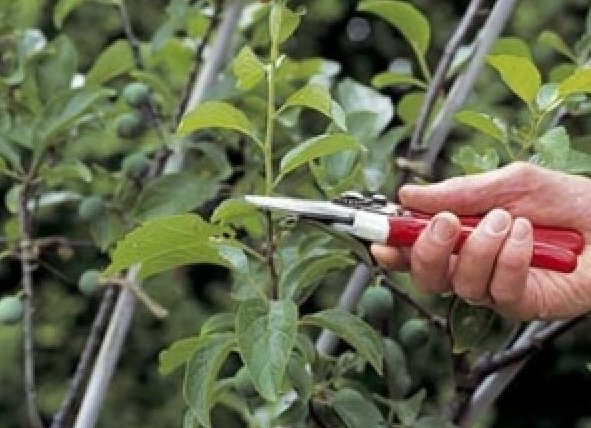

Feature of autumn care
It is necessary to take care of the plum throughout the growing season.
If spring care is aimed at increasing yields, and summer care is aimed at extending the fruiting stage, then autumn care is mainly associated with preparation for winter, so that the fruit plant can successfully endure frosts and quickly recover in spring.
During this period, they try to dig up the ground and apply fertilizers in order to ensure a good harvest for the next season.
- They dig up the soil at a distance of about 1 m from the place where the plum grows. Depth - up to 0.3 m. It is possible to dig up the ground around trees only a season after planting.
- Humus, wood ash and superphosphate are introduced. Urea is allowed in small quantities.
The plum blossomed, but no fruit
If the tree is healthy and properly cared for, the reason may be a lack of pollination. Most varieties of plum are self-fertile, they need cross-pollination with a tree of another variety growing in line of sight (for example, for the Skoroplodnaya variety, the best pollinator is Alyonushka).
Decision... Plant (in early autumn) a different kind of plum nearby. If there is no room on the plot, plan to inoculate the pollinator in the crown. The result will have to wait and the harvest will appear in a few years. If your neighbors have plum trees near your fence, plant your own trees closer to your neighbors.


Watering rules
The need for watering directly depends on the weather conditions. With a warm and dry autumn, abundant soil moisture will be required. With frequent rains, they stop watering the trees.
If an excessive amount of precipitation falls, trenches are made around the trunks of the plums, through which excess water will go into the soil layers.
Watering requirements:
- when groundwater passes at a sufficient depth, the soil is moistened at a level of up to 2 m from the surface;
- in moist clay soils, moisture is sufficient up to 1 m below the top layer of the earth.
They try to water the plum garden at the end of autumn, when leaf fall ends. Consumption rate per plant - 35 liters.
To retain moisture, lay out a layer of mulch.
Time range


It is impossible to determine the exact dates of plum processing, in different regions of the country they depend on the climate. In Siberia, it will be mid-April, and in the Moscow region, plums can be sprayed at the end of March. Weather events also affect the timing of the spraying. In order not to be mistaken in time, it is better to adhere to the basic conditions:
- spray the plum for the first time until the buds open and the juices begin to move;
- then - before flowering;
- if necessary - during flowering, if there are symptoms of disease or insect damage;
- repeat - after flowering.
The plant itself will "tell you" when you can start processing. If signs of any disease appear or pests have caused a lot of damage, the plant slows down, there are no fruit ovaries, and fruits do not form.


You may be interested in:
How to treat the garden from pests in the fall If a gardener has a garden to be proud of, or even just a few fruit trees, in the spring and autumn you need ... Read more ...
Cutting technology
Intensive growth of the plum crown leads to nutritional deficiencies and adversely affects yield indicators. This fruit crop requires pruning, which is one of the mandatory autumn activities.
Removing overgrowth and timely crown formation helps to increase the stability of the plum in winter and promotes proper growth.
Prune the plant at the time recommended for the regions:
- gardeners of the middle lane and the Moscow region begin to trim the crown after the final harvest and the completion of the leaf fall;
- in cold climatic areas, for example, in the Urals, Siberia and the like, they try to shorten the stone fruit culture in the spring, closer to summer, because the planned autumn pruning often does not work due to the sudden onset of cold weather.
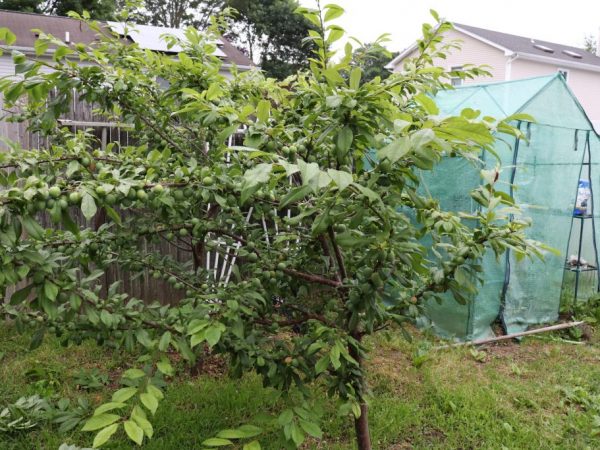

Pruning helps the plant grow
The formation of a fruit tree is carried out using a special technology:
- for annual seedlings, which were planted in the current season, the stem is cut by 2/3, and the shoots are shortened by 1/3;
- biennial and three-year-old plants are thinned out, cutting the length of the branches by 30-40 cm, starting from the tops, long branches that stand out from the total leaf mass are cut by 1/3, the length of the lateral ones is reduced by 15 cm;
- actively fruiting plums are subjected to a sanitary procedure, in which all sick, damaged by pests, broken branches with mechanical damage, the central conductor are completely removed, in case of excessive stretching, they are cut to the level of the common crown, and rapidly developing shoots are removed.
The basic rule for autumn pruning is to trim the shoots in stages, for 2 or more approaches. The last event is planned 2-3 weeks before the cold snap.
How to process plum from worms in fruits in summer
The main rule of summer spraying is that three weeks before the fruit ripens, it is necessary to stop using any chemicals. Biological products that manufacturers position as safe for humans are no longer used on fruit crops two weeks before harvest.
Most pests lay eggs on young ovaries in the spring, immediately after flowering. In summer, the larvae are already inside the fruit, which can be seen by the protruding drops of gum on unripe plums, their premature ripening and shedding. If time was missed in the spring, or due to unfavorable weather conditions, irregularities in the dosage or quality of the preparations, the spring treatments did not have an effect, the application of insecticides in the summer will be ineffective.
In the summer, it makes sense to carry out treatments against fungal diseases: the second stage of monilial burn (which affects the fruit), scab and fruit rot. For these purposes, biological products Gamair or Immunocytofit are suitable.
Creating protection for the winter
Plum requires shelter for the winter. To do this, mulching is carried out or the root system is covered with covering material. Burlap is used as it in several layers. Cover with polyethylene from above and sprinkle with earth.
Whitewashing the trunk helps to protect the trunk from frost cracks, cracking and burns when sunlight reflects from the snow crust. This also reduces the risk of insects remaining under the bark of the larvae.
Pre-existing damage on the bark is cleaned to a healthy layer of wood, covered with a disinfectant and covered with garden varnish.
Whitewashing is carried out in dry weather at the end of the leaf fall at an air temperature of up to 3 ° C. Apply with a brush in a thick layer to the entire trunk and bases of the skeletal branches.
Plum moth
Differs in polymorphism. At the time of the end of the flowering of the plum, light green wingless founders appear from the eggs. They form colonies on the underside of the leaves, causing the leaf blade to bend downward. At the same time, it becomes discolored along the veins. They can also parasitize fruits. The founders give rise to several generations of wingless and winged virgins and males.
Aphids reproduce very quickly and can have up to 12 generations per season. Eggs overwinter on the buds or at their base. Plum-pollinated aphids are one of the most dangerous pests for plums. Damaged leaves and fruits may fall off. The sugary secretions of aphids provoke the development of saprophytic fungi, as a result of which the remaining fruits acquire an ugly shape and rot.
Measures to combat plum aphids are taken in the spring before the mass reproduction of aphids. Before bud break, trees are treated with 1% DNOC solution or 2% nitrafen emulsion. After bud break, the crown is sprayed with 1% DDT oil emulsion. After flowering - 0.15% karbofos.
It is found everywhere. An adult insect is a butterfly with a wingspan of up to 50 mm. The female's wings are light, the male's are orange. On the wings, there are many dark brown transverse stripes and light orange or yellow fringes. The fertilized female lays oval yellow eggs on the leaves of the trees.
The first generation of butterflies flies out in mid-June. The years lasts until August. Caterpillars of the fourth or fifth generation of the moth overwinter in a cocoon covered with cobwebs, which is hidden on the surface of the soil between the leaves. Caterpillars destroy the buds of fruit trees, skeletonize and eat leaves.
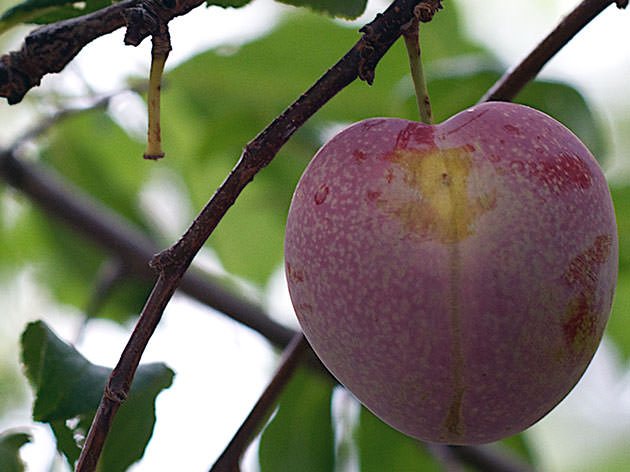

As a fight against this pest, spring and autumn tillage of the soil in the near-trunk circles and aisles is used, which makes it possible to destroy the wintering pupae. Loosening of the soil is repeated in the last decade of May during pupation of caterpillars. If the number of caterpillars on a tree exceeds 4–5 per 1 meter of branch, the tree is sprayed with insecticides or biological products.
Hymenoptera common in the forest-steppe of Russia. It parasitizes plums, cherry plums, apricots, cherries, thorns, cherries. An adult insect has a black slender body with a convex chest, transparent wings with one longitudinal vein, yellowish legs. The length of the female reaches 6 mm, the male - 5 mm.
The imago lives for about a week. Insects are active at an air temperature of about 17 degrees. Years begins a week after the end of the plum blossom. After 3-4 days, the female pierces the ovary of the fetus with the ovipositor and lays one glassy oval egg inside the still soft bone. One female can lay up to 40 eggs.
After about 3 weeks, a larva emerges from the egg and gnaws into the core of the bone, gradually turning it into powder. The legless larva of younger instars is white and slightly bent. The larva of older instars becomes barrel-shaped, reaching a length of 6 mm. The white pupa is 5 mm in size; before the insect emerges, it turns black. In late June – early July, damaged fruits fall off. The larvae remain in fruit until next spring.
Plum aphid pollinated by Hyaloplerus agipdinis F. (syn. H. pruni Geoff g.) Is a small sucking pest 2-3 mm long, pale green in color, covered with a bluish-white fluff from wax-like secretions. Eggs overwinter at the base of the buds, so it is advisable to treat plums from pests in the spring, when the larvae hatch.
They feed on the juice of blossoming buds, and later on young leaves and growing shoots. It develops up to 10 generations of the pest, the greatest harm is caused by aphids in June-July, when the number increases and all shoots with leaves are covered with aphids. The leaves do not curl, but remain small, underdeveloped, covered with larval skins, sooty mushrooms and gradually dry out.
There are many ants on the branches, which feed on the sweet secretions of aphids and for this staunchly protect the colonies from predatory insects. With a large number of aphids, undigested aphid juice drips from the trees, everything is covered with a black film of mycelium with spores, the trees lose their decorative effect, and the fruits - their commercial qualities.
Measures for the control and treatment of plums from pests consist in prophylactic spraying of trees in the spring, during bud break or immediately after flowering, with the drug fufanon or its analogues (kemifos, karbofos). With a large number of pests in the summer, they are treated with the same drugs, and actellik, fitoverm, kinmix, Inta-Vir are also used, taking into account the waiting times for drugs.
Regional features
Middle lane
Residents of the middle zone and the Moscow region perform all the procedures that are provided for autumn care, without restrictions.
Plums are thoroughly watered, fed abundantly, cut to the maximum possible length of the crown and dug up the soil to ensure adequate oxygen access.
In warm regions, trees are not sheltered, but mulch is used.
Volga region
On the territory, protection is often used in the form of a hut structure, which closes the plants from wind flows. They make it from spruce branches tied with twine. Mint is folded inside, which will scare away rodents from the trees.
Ural
Gardeners of the Urals provide winter protection for all plums. Autumn care includes pre-winter watering and pruning. The plants are partially cut off so as not to completely weaken them before the onset of frost.
Siberia
In the harsh climate of Siberia, all trees are subject to insulation, regardless of their age. At the same time, they try not to feed or water them before the onset of cold weather in order to prevent the roots from freezing.
The fruit crop is carefully insulated: the stem, the skeletal branches are wrapped with roofing material or other suitable material, on top - with a layer of reflective foil.
Folk remedies


Gardeners who are negative about the use of agrochemicals in their plots often use solutions prepared according to traditional folk recipes. The components of such preparations are harmless to humans and do not violate the ecology of the garden and soil.
From flying pests, you can cook:
- Ash and soap solution. 1 kg of ash is poured into 10 liters of warm water, insisted for 2 days, 100 g of laundry or tar soap is added. Stir and filter the mixture. Spray the plum 2-3 times every 2 weeks.
- Garlic infusion. In 5 liters of water, 500 g of peeled garlic cloves and a bunch of arrows are soaked. Insist for 2 days, filter, add another 5 liters of water. Plum trees and seedlings are processed 3 times during the growing season.
- Tobacco tincture. 200 g of tobacco leaves are finely cut, poured with hot water, and left to stand for 24 hours. The crown and trunk of the plum are sprayed with infusion 3 times.
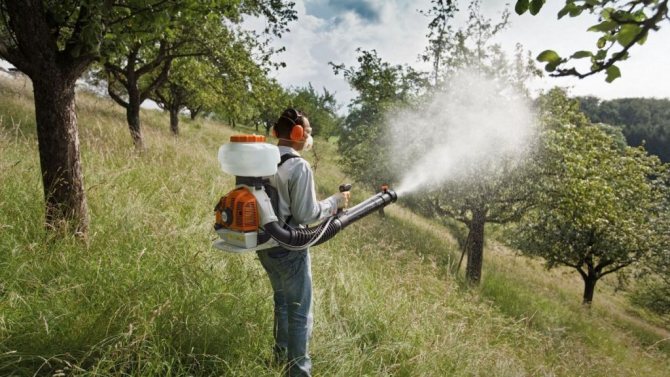

You may be interested in:
Timing of spraying trees and shrubs in spring from pests There is a lot of work at the summer cottage in the spring. In particular, it concerns the processing of fruit trees, as well as shrubs from ... Read more ...
A decoction of yarrow helps to cope with fruit worms: 2 kg of fresh leaves are crushed, 8 liters of hot water are added, and boiled for about 30 minutes. In the cooled solution, put 20 g of grated soap.
You can drive ants out of the site using boric acid:
- Put 2 tbsp in a glass of boric acid. l. sugar poured around the anthill.
- 4 tbsp. tablespoons of minced meat are mixed with 1 spoon of acid, small balls are prepared, laid out near the ant heap.
It should be noted that with the accumulation of a significant number of pests, such recipes do not always help.
Pest control methods
In preparation for winter, the plum is carefully inspected for the presence of pests and signs of infection. pathogens and parasitic insects remain for the winter, and when warm comes in the spring they become more active, which can adversely affect future flowering and harvest.


Pests spoil the harvest
For therapeutic and prophylactic purposes:
- completely remove leaf litter in the area of the trunk circle;
- protect the places of bark discharge from wood layers;
- moss and lichen growths are removed from the branches and trunk;
- cut dry and diseased branches;
- treated with insecticidal and fungicidal preparations;
- whitewash the boles.
Pest control technology:
- the near-trunk circle is closed with unnecessary material on the perimeter of the growth of the plum crown;
- mechanically shake insects from the tree;
- dead fragments of the bark are cleaned with a scraper, in the same way they remove the growths of moss and lichens, thereby removing the oviposition;
- a brush with a metal bristle treats the surface of the cleaned areas without touching healthy wood;
- skeletal and side branches, as well as the trunk at a distance of 0.7 m, are sprayed with insecticidal solutions and fungicides of the systemic spectrum of action;
- the remains of the bark, collected moss and lichens are burned outside the garden to avoid the preservation of larvae in them.
More often, gardeners use urea with a concentration of 5% (500 g / 10 l of water) for treatments. The work is carried out in the morning or evening hours, in the absence of precipitation and wind.
An additional prophylactic agent against pests are infusions:
- 2 garlic heads;
- 2 cups onion skins
- 50 g of crushed laundry soap;
- 5 liters of water.
To prepare a working solution, garlic is mixed with onion peel, soap is added, water is brought to a boil and the prepared mixture is poured into it. The infusion is kept until it cools completely, filtered through a layer of gauze and sprayed on the garden.
In case of mass damage to a fruit crop, specially developed means are used, for example, Karbofos, Aktara, Nitrofen.
Fruit mites
Fruit mites predominantly reproduce in summer, when pyrethroid drugs are used as an insecticide. The most common red fruit mite is found. It is an insect 0.4 mm in size, first red, then red-brown. In a month of her life, the female lays up to hundreds of red spherical eggs with radial ribbing and a thin stem at the top.
During the summer, the red fruit mite can give 4 to 8 generations. Summer eggs are predominantly laid along the leaf veins, on its underside. Closer to winter, females lay eggs in the periphery of the crown on young shoots. Eggs overwinter on the surface of the rough bark. When the tree is severely affected, the bark appears reddish brown.
After overwintering before flowering apple orchards, larvae hatch from the eggs, which, through the nymph stage, turn into an adult insect. After a week, the red fruit mite is already capable of reproduction.
By means of the sucking mouth apparatus, the mites suck the juices from the leaves, as a result of which the foliage dries up and falls off. Plums wrinkle and become shallow. With a massive infection, a loss of yield by a third is possible.
In case of infection of a plum garden with a red fruit mite, the use of pyrethroid drugs is excluded. At the moment of maximum hatching of the larvae, insectocaricides are used: fufanon, danadim, fitoverm, etc. When the mite multiplies, specific preparations are used, such as sunmite, neoron, nissoran, apollo, demitan, omite, etc.
Common mistakes
Gardeners making mistakes when leaving in the fall can lead to a decrease in yields for the next season. Typical violations include:
- ignoring autumn treatments for pests and infectious diseases;
- leaving leaf litter in the area of the trunk circle;
- lack of stripping boles from moss, lichens and dead bark;
- incorrect cropping.
All these mistakes lead to a weakening of the tree before winter and affect the overall frost resistance.
Agrochemicals
Chemicals are considered the most effective for treating the garden from pests and diseases. Ready-made concentrated liquids and powder mixtures are on sale. Their assortment is significant, there is plenty to choose from.
Prophylactin
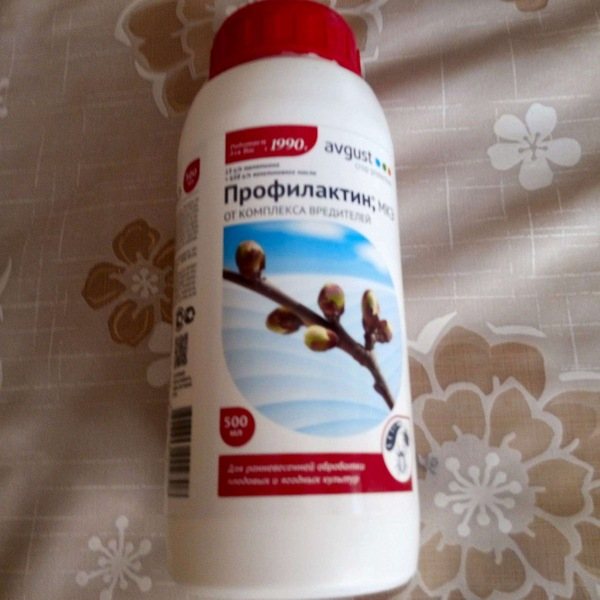

Insectocaricide is used to control overwintered insects (adults and larvae) in early spring. When spraying plums with Prophylactin in March-April, the reproduction of pest colonies is suppressed, ticks, leafworm larvae, and aphids are destroyed.Manufacturers release the finished liquid product in 500 ml plastic bottles.
Attention!
Before use it is necessary to read the Instructions. The concentration of solutions should be observed, the dosage should not be exceeded.
Tanrek
The drug (insecticide) enteric is released in ampoules and vials. One package is enough to process 5-6 mature trees or 7 seedlings. The tool effectively destroys aphids, whiteflies, moths, flea beetles. There are many analogues of Tanrek: Biotlin, Bison, Imidor, Corado, Tabu.
The solution acts on the nervous system of pests, paralyzes it, causes convulsions and death of insects. The period of action of the drug is at least 30 days. Plant protection also takes place in the soil, the substance decomposes only after 50 - 100 days. Effectively affects beetles and non-arthropod insects.
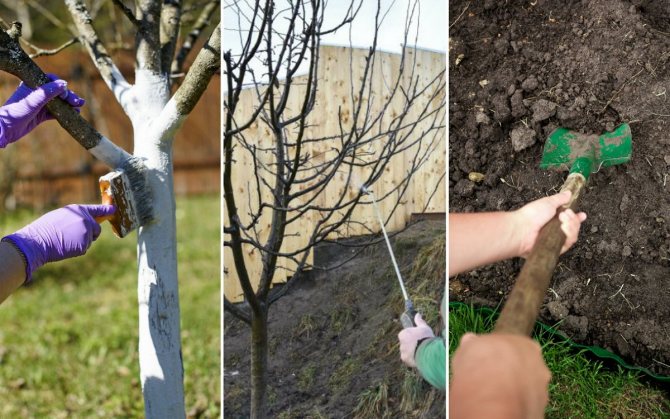

You may be interested in:
How to treat fruit trees in the fall from diseases and pests There are countless diseases and pests, and each of the gardeners and gardeners will certainly encounter ... Read more ...
Bordeaux liquid


Small blue crystals dissolve well in water. Solutions are used for spring treatment of gardens from fungi and other pathogens. The main active ingredient, copper sulfate, does not harm plants.
Preventive spraying of plum trees protects them from damage: gray and brown rot, powdery mildew, late blight, rubella, scab, curl and leaf spot.
Fitoverm
This tool is considered one of the most popular for treating garden and indoor plants from pests: ticks, sawflies, leaf rollers, moths, whiteflies, thrips, aphids.
Sell liquid concentrate in ampoules (2, 4, 5 ml) or bottles (10, 30, 50, 100 ml). Before use, you need to dilute it with water according to the Instructions.
After a few hours (from 6 to 

Lepidocide
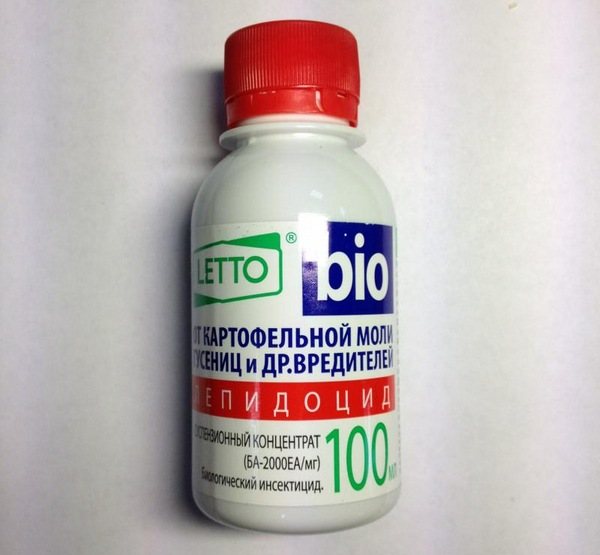

You can treat plums from worms in fruits with this effective remedy. For prevention, trees and seedlings are sprayed with Lepidocide solution in early spring. It will be necessary to repeat the treatment after fruiting, if some berries have been damaged by worms and insect caterpillars. Indeed, as a result of the action of these gluttonous pests, the fruits rot, the yield is reduced.
The product is produced in the form of a powder, concentrated suspension, suspension modified concentrate. Lepidocide has a fourth hazard class, does not harm humans and animals. It scares away bees with its smell, thereby protecting their harmful effects.
Exposure to pests lasts 2-3 days. Gnawing insects stop feeding and die.
Copper sulfate
The popular universal remedy helps to get rid of pests, protects plants from fungi, rot and mold. In the spring, before the buds bloom, the plum is treated with a solution of copper sulfate. It is necessary to spray before flowering, until the bees have arrived in the garden.
The tool is used for preventive treatments of fruit trees in spring and autumn, as well as for top dressing with a lack of copper in the soil.
List of tools and materials
If the garden is young, one pruner is enough for it
For pruning plums, you need high-quality and well-sharpened tools:
- Secateurs for branches up to 25 mm thick. The bypass model is good for live branches, the anvil model is good for dried ones.
- Lopper for branches up to 50 mm thick in hard-to-reach places. Long handles will allow you to penetrate into the thickened crown.
- Small and large garden saw (hacksaw) for branches thicker than 50 mm (dead and dry)
- Garden knife for burrs and irregularities.
Cuts and cuts need to be processed with garden pitch - prepare it in advance.
Timing to fertilize in autumn
When is the best time to apply fertilizers, and which ones? First of all, it should be noted that if the plum was planted according to all the rules and the necessary substances were introduced during planting, first three years
young seedling
no need to feed
.
If the tree is already fruiting, then you need to fertilize yearly
... Everything that is brought under the tree is placed in the near-stem holes, along a radius of 1.5 meters, and around the young seedlings - in a ring, departing from the trunk 15-25 cm.
In order for the root system to have time to assimilate all the nutrients, it is necessary to feed a month before the onset of cold weather
.
Protection of young plums and seedlings
Young trees are most susceptible to frost; they also often become prey for rodents (mice or hares) in winter. Whitewashing the trunk serves as a good protection against frost cracks and March sunburns, but from severe frosts, the trunks of young trees are wrapped up, tied to them with coniferous spruce branches or roofing felt. In the latter case, it is advisable to add reflective foil. In cold regions, the youngest trees are harbored more seriously: equip "hut", constructing a frame of boards, which is stretched non-woven materials.
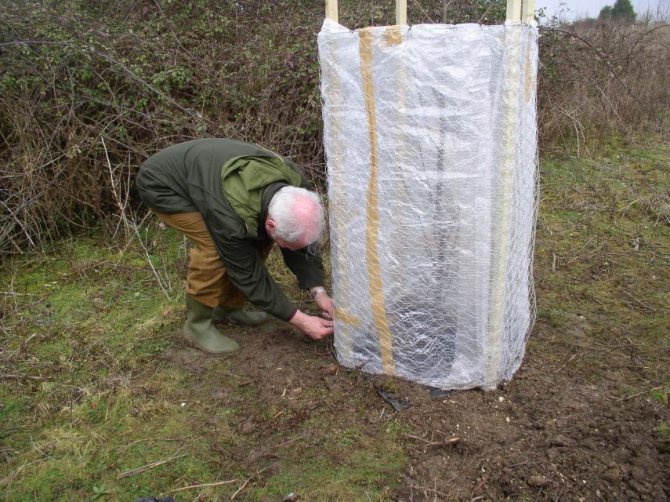

For the most capricious trees you have to build an individual "house"
Coniferous spruce branches perfectly protects trunks from rodents (nylon tights do not always save them from them). It should be remembered that mice usually make their way to trees under the snow (and therefore it is advisable to trample the snow near the trunks), and hares can stand on two legs (therefore, the height of the shelter should be about a meter).
What tools are needed to trim wood


The gardener's arsenal for the pruning procedure should include:
- hacksaw
- garden knife
- secateurs
These things must be treated with disinfectant solutions. Especially if before that they were used to cut diseased plants. After all, many diseases are universal, transmitted from one type of culture to another. There are common diseases in woody and herbaceous crops.
The instrument must be well sharpened: flattened or grinded sections take a long time to heal, often with necrosis of these areas.
Skeletal branches are cut with a hacksaw. With a knife, mainly young growth is eliminated, the ends are shortened. To make a smooth cut without damaging tissue, you should practice on unnecessary rods.
The pruner is a very handy tool. Can cut fairly thick branches. It should be as sharp as possible, otherwise it will severely damage the cut area.
Digging the soil
Digging is done only after the plum has dropped all the foliage.
This procedure consists of:
- in applying the necessary fertilizers (approximately at a distance of 1 meter from the tree):
- in digging the soil to a depth of 10 to 15 centimeters.
Recommended fertilizers:
- humus in an amount from 10 to 15 kg;
- superphosphate about 100 gr;
- wood ash from 300 to 400 gr.
Read also: Shelf life of fresh garlic
You can add a little urea (no more than 40 grams).
How to care for a plum
Plum growing and caring for it consists of the stages usual for fruit crops:
- sanitary and preventive measures, including treatment for diseases and pests;
- pruning, including shaping the crown;
- watering, loosening and mulching;
- top dressing;
- harvesting.
The gardener should know how and when to do this work in order to ensure the correct development of the plant and get a high yield of quality fruits.
Preparing plums for winter
When the temperature drops, the flexibility of the branches is naturally lost. Snowdrifts, harsh winds can significantly injure the plant. In this regard, it is necessary to carry out preventive, formative pruning of the tree.
It makes sense to whiten the lower part of the trunk by adding a tablespoon of copper sulfate to the lime (five kilograms).Be sure to create protection against rodents - mice, hares, etc. it is necessary to properly insulate the plum for the winter period, the plant does not tolerate wind in the first place.
In order to avoid the appearance of pests in the spring, treat the land around the plum tree with insecticides and fungicides, potassium permanganate and copper sulfate are also used. After cultivating the land, loosen it. In the compacted earth, larvae, fungal spores, and other infection can hibernate. When loosening, they are more likely to freeze out.
Finally
Here are the main preventive measures for plum care in the fall. Subject to these simple rules, trees will survive frosts without damage. The harvest is guaranteed to be plentiful, the plants are healthy. That's all. All the best, strength, health, good mood, goodbye! If you have any questions or comments, please write in the comments. It is important for me to hear your opinion. Thank you.
Irrigation of plums - a few basic rules
It is very important to pay close attention to watering, since the plum is a moisture-loving plant, its roots are located close to the surface of the earth, branching at a depth of about 40 centimeters. Here it is worthwhile to return to feeding for a while. The fact is that with a normal content of nutrients, they enter the roots along with moisture. And with rare watering, signs of a lack of minerals will certainly appear, which are expressed primarily by drying out the edges of the leaves and shedding the fruits. Therefore, one should not forget about regular watering of the plum garden, taking into account, however, the depth of the groundwater. If you have a perch on the site, the trees should be looked after very carefully, abundant irrigation can lead to waterlogging of the root system.
Plum irrigation
On average, during the growing season, you need to water the plum at least 6 times, and during a drought up to 8-10 times. Moreover, most of the irrigation activities occur during the period of flowering and ripening of fruits. As a rule, about 7 buckets on average are poured under the tree each time (more or less depends on the humidity of the air and soil). Autumn watering is no less important than spring watering, since it helps the plum prepare for winter, to go through the so-called hardening period. It is best carried out in the last decade of September or at the beginning of October, after the foliage has fallen, and the amount of water should be increased 3 times, that is, from 18 to 24 buckets per tree. In order for moisture to remain in the soil for a long time and soak it at least 1 meter in depth, the surface must be mulched with peat, manure or sawdust.
Be careful if heavy rains are expected in the fall, it is better to refrain from watering or only to moisten the soil on those days when there are intervals between precipitation. The fact is that too much water in the soil during warm autumn days can cause late growth of shoots and a sharp increase in green mass in some varieties. In some cases, even secondary flowering was noted, mainly in the Chinese plum and its hybrids. To avoid this, you need to make branch grooves in the rainy season, you can also try to cover the soil under the trees with a thick film so that the water flows from it into the drainage system.
How to feed plums in autumn
Organic fertilizers
Fruiting plums and young seedlings that have reached the age of three must first of all be supplied with a sufficient amount of organic fertilizers - rotted manure, compost
... They have a beneficial effect on both the soil structure and the tree itself:
- nourish the root system well, restore its vitality;
- have a beneficial effect on growth;
- help to increase the yield;
- prevent soil mineralization, keeping the structure "alive" and loose.
Fresh manure cannot be used in autumn, and rotted (humus) is distributed around the trunk at the rate of 7-8kg / 1sq.m
, soil
loosen by 15-20 cm
... Pig manure and poultry droppings are best set aside until spring, as they contain a large amount of nitrogen.
Wood ash
Ordinary ash, especially from the combustion of deciduous trees, straw is the cheapest balanced mineral fertilizer.
Wood ash contains 17 trace elements that enrich the soil and nourish plants. In addition, ash normalizes the acid balance, and plums are very fond of alkaline soils.
For 1 sq. M is enough 250g ash
... To reduce acidity, and significantly increase the yield of plums, the introduction of a mixture will help - 1 bucket of humus + 1 glass of fluff (lime) evenly distribute around the tree, loosen the soil and water.
Potassium-phosphorus
Potassium is necessary for the plum just before winter, since promotes fluid excretion
, thereby increasing frost resistance. There is a lot of it in manure with rotted straw bedding; it can also be applied in its pure form, diluted with water at the rate of 30 g per 1 sq. M.
The plum phosphorus must have enough time to accumulate until the next harvest, so it must be applied in the fall. This trace element strengthens the root system
and promotes the accumulation of sugar and protein in tree sap. For this, bone meal is used - 50g / 1sq.m.
Superphosphates
These fertilizers contain several useful elements that plums need in the fall: phosphorus, potassium, sulfur, calcium, permissible amount of nitrogen
... They are also convenient because they easily dissolve in water and are introduced as a liquid top dressing: dilute 250-300g in 10 liters, add at the rate of 60g / 1sq.m. The dose of superphosphate is halved.
Together with phosphate fertilizer, you can apply potassium magnesium
- 100-120g for each tree. Potassium and magnesium contribute to the normal development of young shoots and fruits. The lack of elements will be indicated by the red-brown color of the plum leaves.
The tree needs calcium for the development and growth of its root system. Superphosphate fertilizer contains a sufficient amount of it. On acidic soils, it can be applied as an independent feeding, since it contributes to a balanced accumulation of iron and manganese in the soil - the main sources of the oxidation process.
Calcium sulfate, nitrate or chloride
diluted with water in the amount of 25g / 10l. By the way, if you used lime to deoxidize the soil, then this will also be enough (after all, lime is calcium carbonate).
To protect the plum from fungal infections and other diseases, you need to feed it iron
... Foliar dressing will be the most effective - you just need to spray it with a solution of ferrous sulfate.
Dolomite flour
Dolomite flour is added together with fluff lime or ash. She's well reduces soil acidity
, supplies plenty of calcium and magnesium.
The oversaturation with mineral fertilizers also negatively affects the growth, development and fruiting of trees and horticultural crops, as well as their shortage. Therefore, it is important to apply the required amount of only those fertilizers that are needed specifically for your garden.
The state of the tree will tell you what it needs. Only organic matter can be introduced under young trees in the fall, and the rest - gradually, in the form of one-time dressings. Up to three components are added under adult plums, along with compost or humus. The soil must be loosened well and watered abundantly. After that, the ground around the tree is mulched.
After this preparation, your trees will be protected throughout the winter and will produce a wonderful harvest next year.
Proper care of the plum in the fall will make it possible for the tree to survive the winter without complications. This is the main goal of the autumn activities aimed at caring for the plant. Despite the fact that the aboveground part of the plum is in a dormant stage in winter, life processes, sap flow is stopped, the root system continues and develops.
Fruit tree processing
Treating the garden in the fall is extremely important.The gardener should not forget about the fruit-bearing trees that gave you the harvest. Pat about them. As soon as the foliage begins to turn yellow, it is necessary to bring organic and mineral dressings under the trunk circle.
After the end of the harvesting of the last fruits, it is necessary to carefully examine the trees, cut off the branches broken under the burden of the harvest, cut off unhealthy and dried up shoots, heal wounds and hollows.
Remember! The pruning tool must be sharp and clean.
All sections must be covered with garden var. It is good to clean the hollow tree, treat it with copper or iron vitriol and cover it with a special garden putty or garden varnish. Before the foliage falls off, spray the area - disinfect the fruit-bearing garden from scab - trees with 4% urea solution.
To do this, dissolve 400 g of urea in 10 liters of water. You also need to spray the ground near the tree. If it is dry autumn, then it is necessary to water the garden soundly, to organize protective grooves so that the water does not drain. In the old garden, after the rain, clean off the decrepit bark from the trunk and the main skeletal branches (pests may be hiding there), remove the trapping belts - burn all these parts.
Do not keep embalmed fruits for the winter, they must be removed and burned. Whitewash the trees in late autumn. It is advisable to do this when the autumn showers have already ended, otherwise all the paint will be washed off. The young garden needs to be protected from small rodents. To do this, lay out the poisoned baits in secluded places, however, so that birds do not try them.
Frost breakers
Damage to tree tissue due to frost is a frequent and dangerous phenomenon: pathogens can get into the wound, which will cause great damage to the tree with the onset of the warm season. If the plum has already suffered from frost damage before, you should especially try to prevent this from happening again.
Decision... Autumn watering will help to increase winter hardiness at a time when foliage is already beginning to fall. The root system consumes moisture until the soil freezes. If the autumn is rainy, there is no need for watering, but when there is little rainfall and the ground does not freeze for a long time, the plants may suffer. Watering doses depend on the age of the plant: the ground at a depth of 40 cm along the entire projection of the crown should be moist. Water should be abundant, but so that the water does not stagnate.
Features of pruning old and fruiting trees
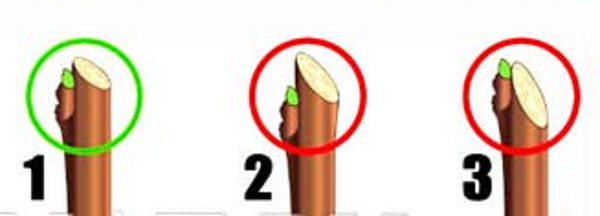

The picture shows three types of slice. The first is considered correct. The second two have too large a cut area, and therefore they will take a very long time to heal.
Young trees require formative pruning. This stage is decisive in the life of a plant. Its condition, yield, height depends on a properly formed crown. The correct shape of the tree allows the gardener to effortlessly remove fruit, spray the plant, and carry out maintenance pruning.
On average, the formation of a plum ends by the third year of being in the garden. Further, the tree enters the fruiting period and needs only a slight adjustment, which maintains the shape of the crown and eliminates diseased and dead branches.
Also, during the life of the tree, it is necessary to cut out the shoots that grow from the roots or from the trunk below the graft. They should not take energy from the fruit tree. Branches that did not have fruit in the current year are removed near the trunk itself, since it is difficult to wait for a fertile growth on poor material.
Old trees need either replacement or rejuvenation. It is usually difficult for gardeners to part with a tree that has been given a lot of energy. Therefore, the problem is solved by radically replacing old skeletal branches with young shoots. Thick branches are gradually cut out. Successfully growing young branches or shoots are left next to them. If there are none, wait for the appearance of new shoots in the area of the saw cut. They grow strongly in the first year.Choose the strongest and growing in the right direction. This process is repeated with all the aged branches.
Harvested - don't forget to cut the branches
The pruning date is mid-September. Trees need to heal their wounds and gain strength before wintering. The main goal of autumn pruning is to get rid of unnecessary, sick, old branches. To avoid unnecessary stress on the branches during heavy snowfalls and strong winds.
How you prune the tree depends on the type of crown formation. All plum varieties are divided into two main groups:
- Crop on annual wood. They are easier to care for and easier to trim. They have many fruit buds. Flower ovary is formed on medium to long shoots.
- Fruiting on two-year-old shoots. Need more attention and care knowledge. Form single buds on annual shoots. Then they turn into fruiting spurs.
There are two trimming options:
- shaping as a leader trunk. There is a main trunk, and lateral branches branch off from it in approximately the same order. The tree grows tall and has medium-length branches on the sides;
- shaping like a bowl. The main conductor is cut after 4 shoots. Large standard branches begin to rise above the trunk. They grow powerful and sturdy, acquire their own crown.
To prepare the tree for winter, young, abundantly growing shoots are cut off. They are shortened by two-thirds. Especially if they have grown excessively over the summer. Under the circle they get rid of damaged and decrepit branches. Old branches are examined and pruned by no more than one third.


Plum breeding methods
Any gardener dreams of learning the right way to propagate plum trees. There are three main breeding methods:
- Bygrowth. It is necessary to prepare the shoots at the beginning of spring, choosing the most developed shoot and digging it up. The height of the sprout should be about 20 cm, cut off the rest. Lubricate the cut with garden pitch, in order to avoid infection. After that, we plant the shoots at a permanent location.
- Root cuttings. To dig up the cuttings, step back a meter from the trunk. Cut the workpiece into pieces about 15–20 cm. Planting takes place in early May, only in well-moistened and loose soil. Plant the cuttings at a slight angle, ten centimeters apart. Cover the top with film, which must be removed after thirty days. Don't forget to water regularly.
- Vaccination. The best time to spend is when the kidneys swell. First you need to choose a stalk. Your future harvest depends on it. Ask your neighbors in the summer cottage, maybe someone has a beautiful plum tree. Ask for a small stalk. Then make the same cuts in the stem of your plum and the new cutting. Connect them tightly and tie them tightly using thread or burlap (any material at hand). Now it remains to wait for the appearance of green leaves on the process. This means that the vaccination was successful. Attention! As soon as young leaves begin to grow on the grafted piece, you must cut off all the old branches. This will help the new growth grow and develop better.
Cleaning leaves from the garden
Gather the leaves with a rake. If your shrubs and trees have not been affected by diseases and pests, send the foliage to a compost heap or to warm beds, use as mulch for wintering flowers. But keep in mind: leaves infected with scab, powdery mildew and other diseases are not suitable for this. Take them outside your area and burn them.
Don't forget to remove the leaves from the roofs of all your buildings on the lot!
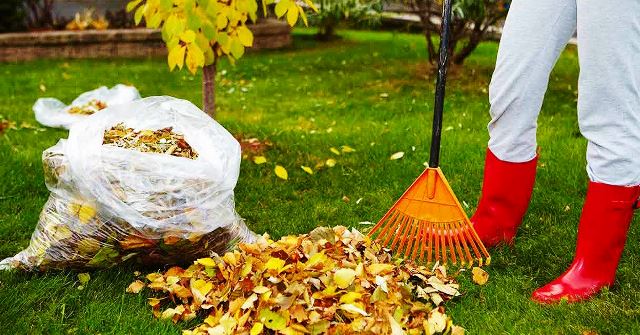

How to spray plants
At this time, gardening shops sell a wide range of specialized formulations (often combined from fungicides and insecticides) for autumn spraying of a garden plot.But we will discuss the most popular remedies.
- Urea spraying is performed until mid-October. In the fall, it is a good medicine for combating fungal diseases, as well as scab and spots. In addition, urea perfectly burns insect eggs and harms pupae. But it is not necessary to use urea at the end of the autumn period (closer to winter), since this composition feeds the plant with nitrogen. Urea is very often used as a nitrogen fertilizer. If you spray the garden with it for the winter, vegetation processes are activated in the plantings. The garden will not have time to prepare for sleep before the cold weather begins and, most likely, will die. For this reason, the treatment of trees with urea in autumn is allowed, but only until the end of October. It is not necessary to sprinkle the garden with urea a month before the start of frost.
- Other fungicides should be used to combat scab, powdery mildew and putrefactive diseases. For example, the treatment of trees in autumn with copper sulfate shows an excellent effect. This tool is allowed to be used at any time of the year.
- If slaked lime is added to the copper sulfate in a ratio of 1: 1, we get the so-called Bordeaux mixture - a good composition for the parallel fight against diseases and insects. Treating trees with Bordeaux liquid is the most famous type of spraying today. The product has a delicate bluish tone, so if your plantings are wrapped in a film of heavenly color, you do not need to worry. Over time, the color will disappear, but there will be no hostile insects or harmful microbes in the garden.
- Sometimes on the plots, the treatment of trees with iron sulfate is used, mainly for apple orchards. This fungicide works similarly to copper sulfate, only in addition it nourishes the vegetation with iron. This is an extremely important trace element for the Yablonev tribe. He takes an active part in many oxidative processes in apples, plums, cherries, peaches.
Insecticides are allowed to be added to copper or iron sulfate. This will give a more successful insect control.
After carrying out all the autumn activities (pruning, treating trees with fungicides, whitewashing, placing insulation and protective equipment), do not forget to clean up the planting area. You do not process garbage in the form of fallen leaves and clipped branches, and insect pests can easily live in them, pathogens can breed. For this reason, all garbage must be collected and incinerated.
Landing
Many gardeners are outraged that planted plums do not bear fruit or even die. The main reason for this is incorrect transplanting or planting of the seedling. Therefore, before burying a young tree in a hole, it is worthwhile to thoroughly study the main points of these processes and prepare the appropriate inventory - stakes, wire and garden tools.
Paralympian Talay without arms and legs: "the harder the fight, the more significant the victory"
"Olga" from the series of the same name: the tragic fate of the actress Yana Troyanova
Sometimes we wear a bra the wrong way: ways that are harmful to health
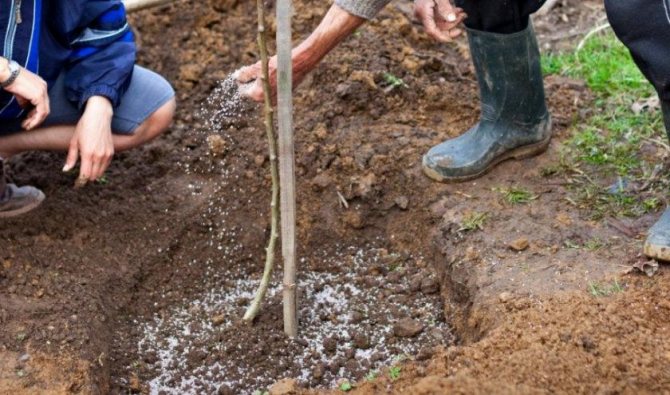

Plums are planted in the fall in approximately the following sequence:
- On the site, a place is set aside for planting trees. Preference is given to an area with moist, well-drained soil and a pH range of 6.5 to 7.2. The place must be well lit and have shelter from the winter cold.
- Next, it is worth preparing the land: first, they get rid of the weeds, and then they apply fertilizers.
- The next stage is the preparation of the pit. Its size will depend on the size of the root system: when expanded, it should fit freely there. On average, the size of the plum pit is 40 by 40 centimeters. Before planting the roots of the seedling, it is necessary to carefully examine and get rid of all crushed and damaged ends.
- After the future tree is placed in a hole and carefully sprinkled with earth so that it evenly fills the space between the roots, and there are no voids left.
- The final stage is to tie the seedling to a wire or peg and water it abundantly.
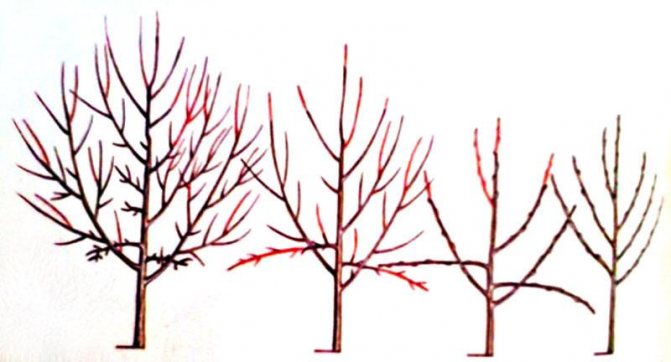

Pest control
The most dangerous pests for plums are aphids and caterpillars.
Protection measures must be taken before the onset of frost, therefore it is more advisable to deal with wood processing in October.
Aphid
An effective way of protection is treatment with an onion-garlic solution:
For cooking you need to take:
- onion husks (about 2 cups);
- several heads of garlic (5 or 6 will be enough);
- 1 bar of laundry soap (regular, no fragrances)
Cooking steps:
- The husks are removed from the onions.
- The garlic is finely chopped.
After the solution has cooled down, you can process the plum. For this, uniform spraying is done, with the maximum emphasis on the most affected areas.
Caterpillar
Another dangerous pest is caterpillars (hawthorn or goldtail), which are able to hide in dry leaves and survive even the winter. They eat all the buds as well as flowers.
To combat them, you need to remove all their nests and buy a special solution, for example, chlorophos, with which to spray.
Bark heating
Premature tissue release from the dormant period is the main cause of damage to the bark, cambium, and often wood. It is accompanied by an increase in the level of vital activity of the tree, while the roots intensively absorb water from the thawed soil above the root collar. With a prolonged stay in an environment with a lack of oxygen, tissues die from poisoning by the resulting metabolic products. Damping off can often be combined with frost damage or the introduction of pathogenic microflora into weakened tissues.
Decision... Loosen the soil in the fall. Consider drainage. If during thaws the water cannot be absorbed into the frozen ground and is standing in the near-trunk circles, try to drain it away. Do not plant plums in low or wet areas.
The ovaries of the plum have fallen
This phenomenon, called a physiological volunteer, is a signal of trouble: the plum suffers from uncomfortable conditions or improper agricultural practices. If during the period of fruit setting there was a drought or heavy rains, the struggle for life deprived the tree of resources for fruiting. Another common cause of physiological volunteers is acidification or depletion of the soil. Stone fruits in general and plums in particular grow best on soils that have a neutral pH. Therefore, when preparing the soil for planting plums, dolomite flour is always added. Falling ovaries on an old plum tree may mean that it is time to feed it with mineral fertilizers.
Decision... In the fall, dig up the trunk circle with the addition of lime, wood ash or dolomite flour. The next year, fertilize with mineral fertilizers. To do this, make holes around the perimeter of the crown 20–25 cm deep. In each hole, add a handful of complex fertilizer and cover with earth. It is enough to apply fertilizers once every 2-3 years.
Important rules
- Use only garden pruning shears. It is unacceptable to break off the branches, this weakens the immunity of the plum.
- Before procedures, all instruments are cleaned and disinfected in any way.
- Cut off shoots must be burned, otherwise they will become a breeding ground for plum parasites. In the future, they can spread to trees, which will negatively affect the harvest and plant health.
- Branches growing inside the crown are always removed.
- Pruning is carried out at temperatures above 10 °.
- Every year, the crown is thinned out from overgrown branches. This allows not only to get more harvest, but also prevents the tree from freezing in winter from a large amount of shade.
- Fertilizer is applied after the procedure, not before.

